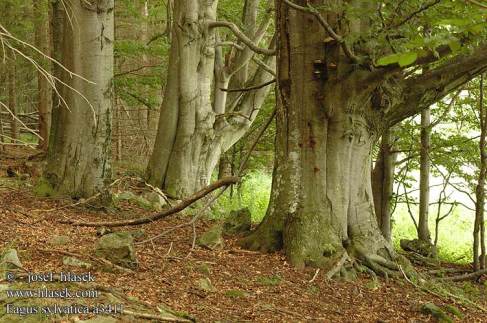
by Aristotelis C. Papageorgiou
A presentation during the IUCN / WWF workshop on “Adaptation to climate change in Mediterranean forest conservation and management” Athens, April 14-16 2008
http://figshare.com/articles/Mediterranean_forest_genetic_diversity_and_adaptive_conservation_strategies/155662
Genetic diversity and the genetic system of a forest population
Biodiversity is clearly classified at three levels (genes, species and ecosystems) in almost all conservation policy documents and strategies and the importance of its genetic component for the adaptation and survival of the other two components is broadly recognized. However, genetic diversity is usually a small part of global, regional and local biodiversity conservation plans and strategies, mainly due to the practical difficulty for its description and quantification. At the same time, a major misunderstanding occurs, as most stakeholders and several scientists consider an expensive laboratory genetic inventory as the primary necessity prior any conservation decision and frequently consider the genes recorded in the laboratories as the target for future conservation activities. However, the role of genetic research in conservation is not to assess genetic variation per se, but rather to describe the parameters that shape genetic diversity, to identify threats, to model scenarios and to monitor the results of conservation measures.
More than maintaining genetic diversity of species in an ecosystem, it is important to maintain the mechanisms that produce high levels of diversity and connect subsequent generations with each other. This “genetic system” includes all evolutionary forces that act on a certain forest population and its function secures adaptability in the future.
Mediterranean forest genetic diversity and climate change
Mediterranean forests are characterized by high biological diversity at all levels. Mediterranean populations of tree species having a broader European expansion are genetically more diverse than populations located in northern latitudes. Populations and species often have a patchy distribution and are highly differentiated. At the same time, several species have a large and extensive distribution over different environments. The reasons for this genetic richness are the mountainous relief that forces species to adopt under different environmental conditions, the geographical location of the Mediterranean basin that allows migration between continents and the existence of important glacial refugia. While Mediterranean forests are rich in terms of genetic diversity, at the same time they are highly endangered due to the pressure of human activities since thousands of years. Furthermore, climate change scenarios show that the Mediterranean basin will suffer most from global warming and that the forests of the region will face severe survival problems.
Climate change is expected to have direct impact on forests in the Mediterranean, where trees will need to survive under severe environmental conditions and their populations will be forced to react evolutionary and adapt or migrate. Yet, some indirect impacts can act faster and have more significant effects on forest populations; change of climatic conditions will probably cause wildfires and large outbreaks of insects and disease. At the same time, social and economic changes caused by climate change can increase pressures on forests. Deforestation will lead to extinction of rare species having a small expansion. Tree species with larger distribution range will lose valuable populations and their locally adopted genetic structures. At the same time, when parts of a species range will be missing, fragmentation will occur, which will gradually lead to loss of diversity and extinction.
Tree populations having initially high levels of genetic diversity may adapt under the new climatic conditions. Yet, due to severity of the climate change, populations are expected to reduce their size and density, where genetic diversity can be reduced due to stochastic events, drift or inbreeding. At the same time, tree populations will need to specialize in the new conditions so much, that the genetic diversity in total and the adaptability in future changes will decline.
Climate change may also shift the limits of geographical range of plants, as it happened during the interglacial periods of the past. Populations that manage to migrate through seeds to the north or to move higher on the mountains experience founder effects and bottlenecks, as only a sample of their initial genetic pool is represented in the new populations. This can lead to loss of genetic diversity and future adaptability. However, it seems that migration will not be easy for plants in the Mediterranean, since human settlements, infrastructure and activities have already fragmented the natural areas and it seems unlikely that seeds will be able to spread gradually to new directions. Furthermore, migration of plants is a very slow process and the expected changes of climatic conditions in the Mediterranean will be rapid, leaving not enough time for natural evacuation of plant populations.
Adaptive conservation and management strategies
We have reasons to worry about the effects of climate change on Mediterranean forest populations, but at the same time we hope that the high genetic diversity of these populations will manage to lead to new adaptations, as it happened with some of these species in the past. Since deforestation is not an option and migration is rather problematic, we should focus how to develop efficient conservation and adaptive management strategies for the Mediterranean forests. Priority in such strategies should be the maintenance and the enhancement of the function of the genetic system that secures the transfer of genetic diversity from one generation to the other and allows evolution to take place.
Strategies for adaptive conservation and management of Mediterranean forests can take place in situ or ex situ. In situ strategies receive an increased attention, as they are more dynamic and allow the forest populations to evolve on site. As far as managed forests are concerned, most management approaches in the Mediterranean are imported from Central Europe, where forestry tradition is much older. These plans need to be adjusted to the Mediterranean conditions, to extend the targeted marketed and non-marketed values and to include all types of wild terrestrial ecosystems, not only productive forests in terms of timber. Emphasis should be given in the avoidance of measures that disturb the genetic system of forest populations. In order to secure pollen and seed movement, fragmentation of forests and low forest density should be avoided. Connectivity between forests should be maintained or restored. Restoration activities should focus in the protection of natural regeneration and where planting occurs, the used material should derive from local seed. Besides management, climate refugia and primary forests should be given priority for protection, mainly through networks of connected protected areas, including the main forest species and their ecotypes.
However, even the best adaptive management strategies will not be able to prevent the loss of species or populations that will not be able to adapt. For this reason, we need to develop ex situ measures for the maintenance of genetic diversity. Frequent and representative collections of seed for the main and most threatened forest tree species should be prioritized. These can be maintained in gene banks, plantations and can contribute to the increase of the genetic base of natural populations through the creation of seed orchards that will provide variable seed for restoration activities. Other measures for conserving local adaptations would be to evacuate certain areas of the south and create copies of populations further in the north. This however is rather complicated, very expensive and can occur only for a few populations. It is probably better to promote management strategies for the existing forests that do not alter the dynamics of the genetic system and allow pollen and seed movement with natural regeneration.
The development of adaptive management and conservation strategies needs effort and collaboration from different stakeholders. A new forest management approach, adjusted to the Mediterranean conditions and focused on the maintenance of natural processes, should be developed and implemented. At the same time, the importance of forests for the communities and settlements should be broadly recognized and an effective forest protection framework should be established.
Mediterranean forests have accumulated an important adaptation potential through different geological and climatic periods. The best strategy against climate change is to protect and manage them, in a way that the adaptation mechanisms will continue their function.



